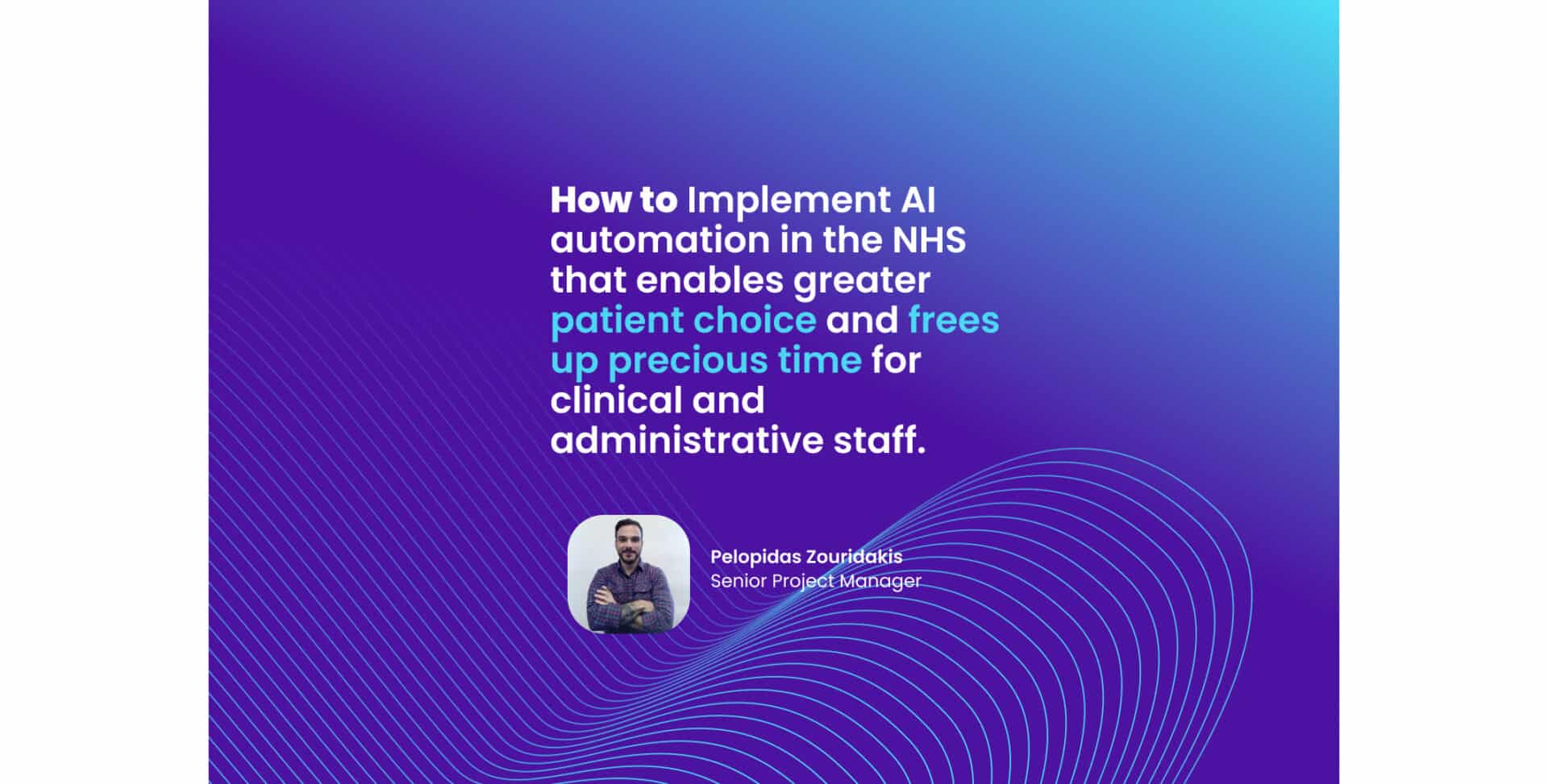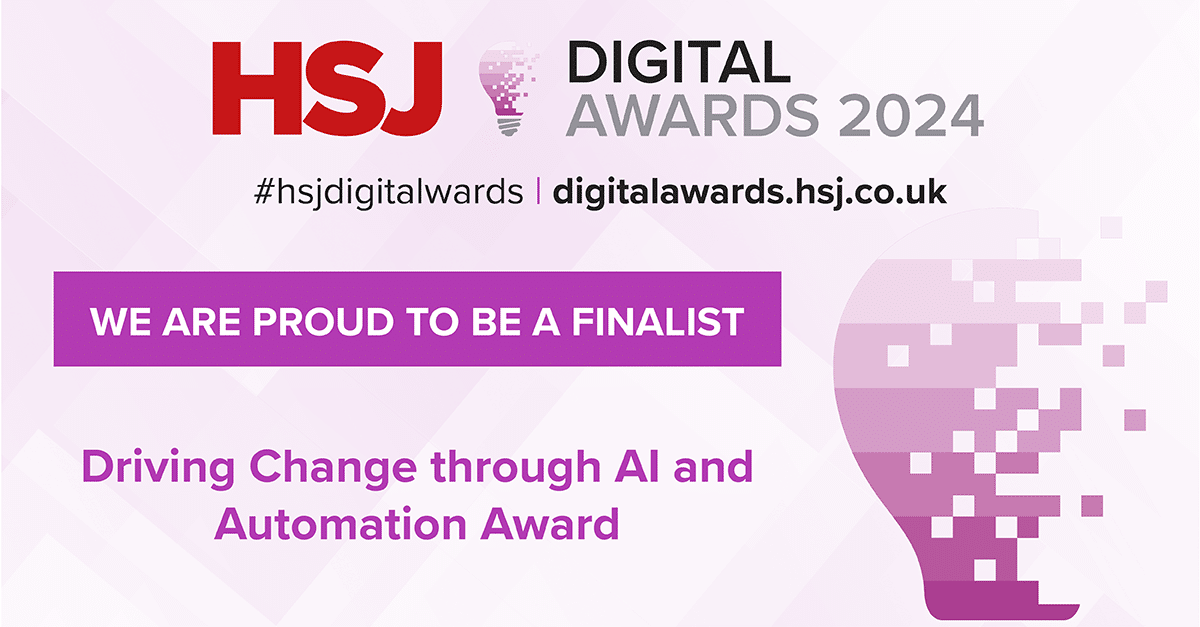Organizational digital transformation. Artificial Intelligence. Natural Language Processing. Process Optimisation. How often do you hear these buzzwords nowadays, and wonder how you’d utilise all the new possibilities that are opening up in front of you, in order to empower, not only patients, but also other colleagues in the organisation? In this blog post you can take a sneak peek into the work we do at EBO to implement AI automation projects in the NHS that enable greater patient choice and free up precious time for clinical and administrative staff.
Identifying the problem & Creating the Vision
When embarking on a new digital transformation project it is very common that the mountain of work ahead can be at many times, overwhelming. What’s a better place to start though, than outlining and understanding the current situation. Through workshop sessions with clinical and administrative team members early on in our NHS projects, we are able to effectively define the exact processes we are looking to improve with our AI for healthcare. This gives us the opportunity to present to frontline teams how their AI-powered Virtual Assistant (or super intelligent chatbot) will help and contribute to their mission, gaining valuable buy-in and engagement for the project ahead. This helps us understand the benefits we want to deliver to both staff and patients.
Set the foundations in place
Once the goals are defined, we proceed to set key principles that will enable the project to flourish. . We start by defining the appropriate technical and leading project roles within the trust and setting the appropriate benefit KPOs & KPIs with our dedicated specialist team. Having a project champion that has faith in the value the project will provide, is always a key factor on moving the project forward within the organisation. Furthermore, a technical lead with knowledge of the Trust’s technical infrastructure and EPR, to support the project on the Trust side is also crucial. Last but not least, the infrastructure that our AI is going to enhance should be in place andoperational.
Define the path and Execute
Once the foundations are in place and the goals are clear, weplan the path ahead. Our team, will present the critical path for the project moving forward. This is not just another IT project but a transformation journey. The respective AI communications will be designed during workshops with the services and the different user journeys will be outlined to make sure we are minimizing any clinical risk and we achieve the benefits we have set out to achieve. During the full process our project is executed in an agile way making it easier to adapt to any possible challenges that may arise..
Reaching the goal
While reaching the end goal of going live is a milestone that in any journey deserves to be celebrated, our continuous partnership with the Trust does not stop there. In order to ensure that a project keeps providing benefits post release, the AI-powered Virtual Assistant is continuously reviewed and optimised. This is achieved through performance reporting and analysis. Past performance and processes are reviewed and fed into a continuous improvement cycle designed to optimise functionality and patient experience.
Effective collaboration and project success provides the Trust the confidence to take the next step in their AI enabled transformation journey.
To find out more about EBO’s AI projects automating patient pathways in the NHS, join our virtual event on 14th of June, entitled ‘Is AI the key to unlocking the digital potential for patient-led healthcare?’. Register here.



